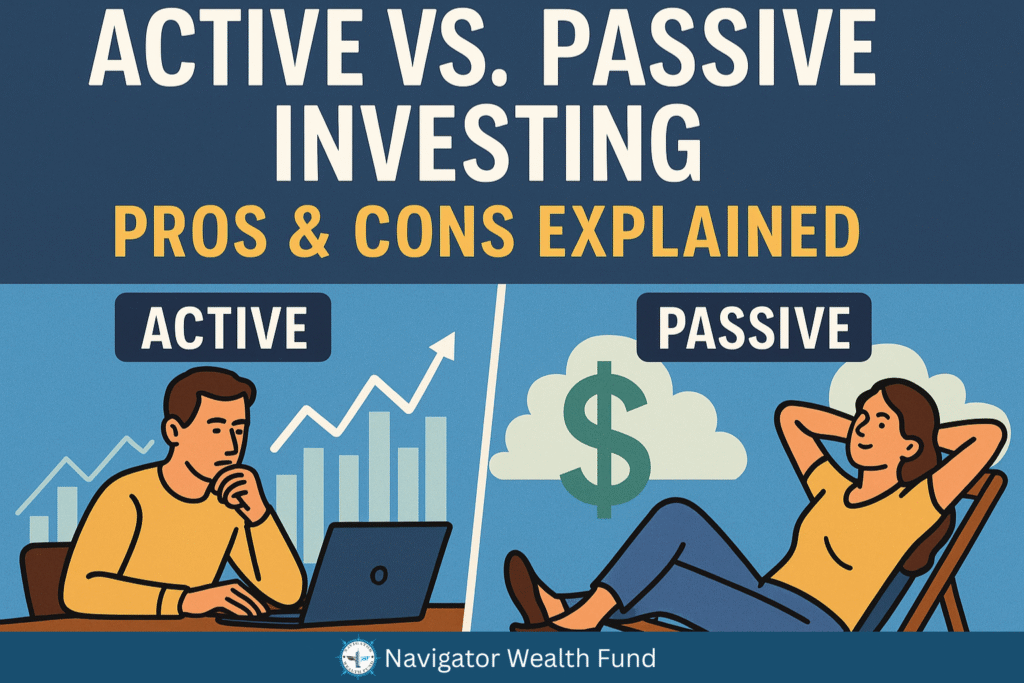Two Paths to Wealth One Lifestyle Decision

Let’s be honest: Not all investing styles fit all people.
Some love the thrill of managing every detail. Others want their money to work while they work on their business, career, or with their family.
At the core, it comes down to this:
Do you want to be the driver or the passenger on your wealth journey?
Understanding the difference between active and passive investing helps you choose the best path, or blend both to match your lifestyle, skill set, and schedule.
Two Paths to Wealth: Which One Fits Your Lifestyle?
Every investor has the opportunity to follow either an active investing or passive investing strategy. Both approaches can be successful, but the key to long-term financial security is understanding which one aligns with your expertise, goals, time commitment, and risk tolerance.
Many investors choose a balance of both active and passive investing. An investor may have expertise in a certain industry and enjoy stock picking or have a construction background and perform their own fix and flip real estate deals. But, if they want to diversify their investments, they may also passively invest in the expertise of others such as a mutual fund in a specific industry sector or invest through a real estate fund manager to new asset classes or geographies.
If you’ve ever wondered whether you should actively manage your investments or take a hands-off approach, here’s what you need to know.
The Differences Between Active & Passive Investing
📌 Active Investing – Requires hands-on management, research, and constant monitoring to maximize returns.
- Your expertise
- Your time
- Your geography (for physical assets)
- Your stress
📌 Passive Investing – Focuses on strategies that leverage the expertise and time of others to generate income without daily effort.
- Choose your strategy. This includes what you want to invest in (e.g. real estate, lending, oil, etc.) and where you want to invest when dealing with physical assets
- Choose between a single asset or pool of assets. Similar to choosing a stock vs. a mutual fund. Alternate investments use syndications (single asset) vs. funds (pool).
- Choose an investment sponsor. The sponsor executes the strategy on your behalf.
How Active & Passive Investing Apply to Private Lending
🔹 Private Money Lending (Active) – Investors lend their own money and handle everything finding borrowers, underwriting deals, managing risk, construction inspections, and handling collections.
🔹 Hard Money Lending (Passive) – A professional company manages the lending process, allowing investors to earn passive income without doing the work.
Which One is Right for You?
✔ Want full control over your investments? → Choose Active Investing (Private Lending).
✔ Prefer passive income with minimal effort? → Choose Passive Investing (Hard Money Lending).
Taking the Next Step
Both active and passive investing have their place, but if you’re looking for hands-off wealth-building, passive investment strategies like hard money lending can offer high-yield opportunities with minimal work on your part.
Interested in earning passive income without the hassle? Explore how hard money lending can work for you.
👉 https://navwf.com/bonus
Disclaimer: The information provided is for informational purposes only and does not constitute financial, tax, or legal advice. Please consult with a qualified financial advisor, tax or legal professionals before making any investment decisions.
